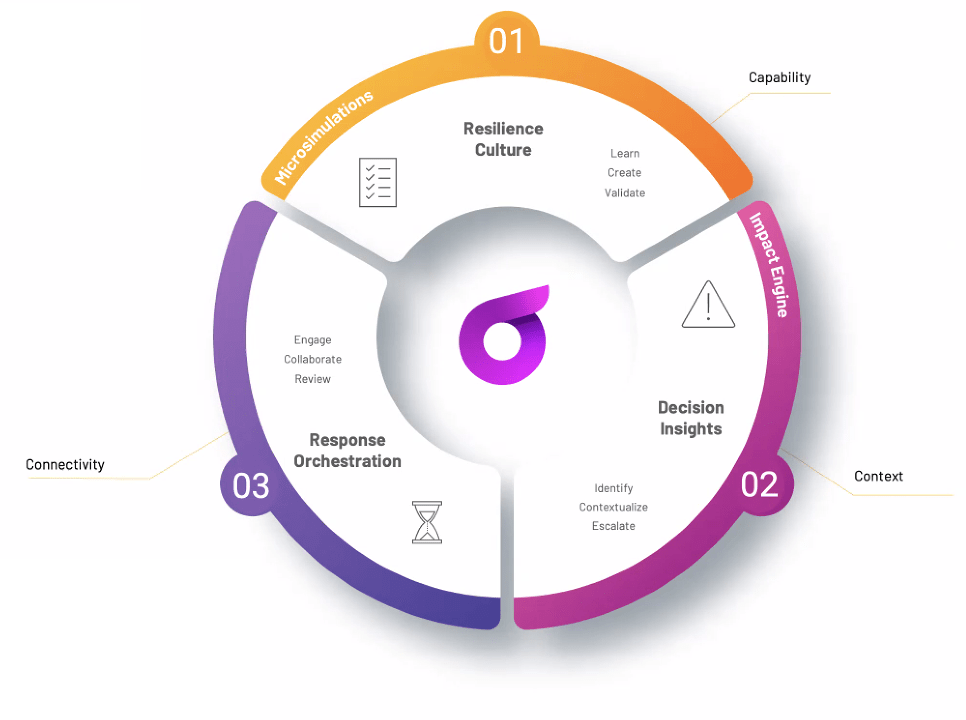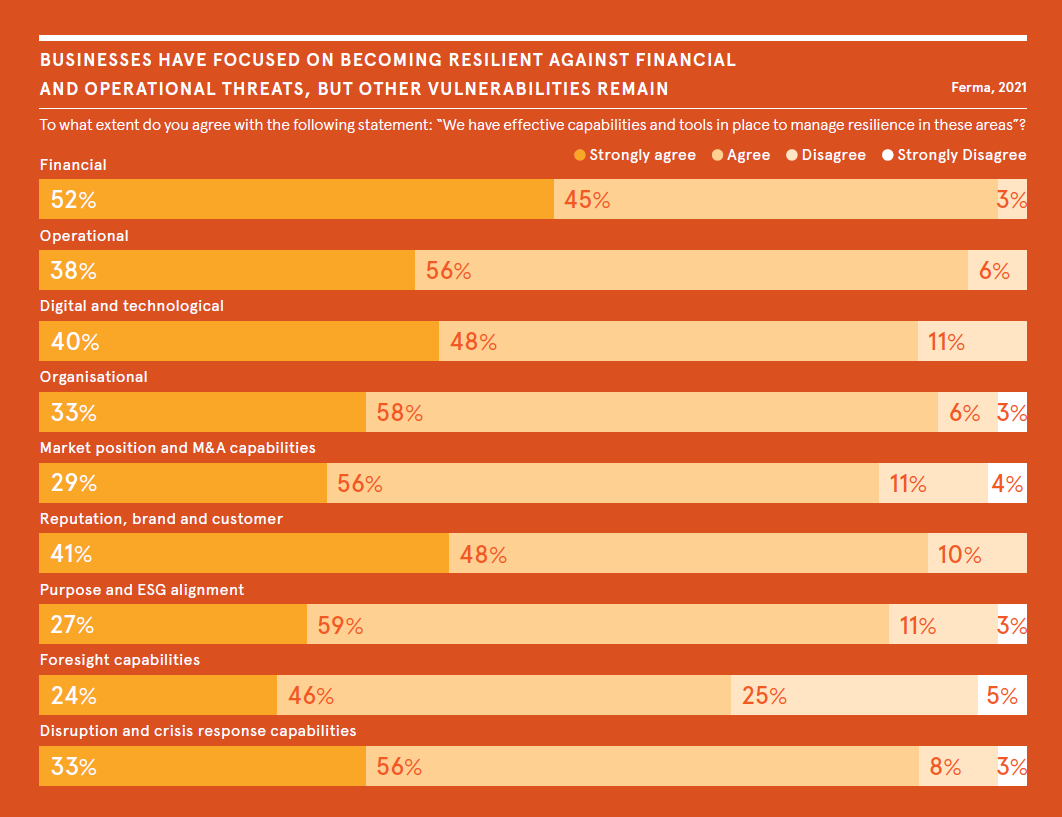Featured in The Times, Raconteur.net
Resilience in a crisis is now a vital business skill. And like any skill, it’s something that should be trained through targeted exercise
In today’s rapidly changing world of permacrisis, stability in business can seem like a distant memory. While many businesses are feeling the pressure of constantly being caught underprepared for disruptive shocks, a new generation of leadership is fueling the strategically adaptive.
These leaders are harnessing the power of business agility. Business agility – a company’s ability to constantly assess its operating environment and modify its processes as conditions change – can make organizations more fluid and responsive to unexpected and fast-moving disruption.
For example, an agile business can quickly find alternative sources when faced with a supply chain disruption like the 2021 Suez Canal incident. Similarly, if a vendor’s data center is hit by a ransomware attack, an agile team will quickly put an action plan into motion. With a well-prepared response, an agile business can adapt to fluctuations in the market, new regulations, competitors’ price cuts, or the consolidation of its biggest client with a non-customer.
Business agility, then, promotes resilience, which is all about being able to ride out change and disruption and become stronger as a result.
It is a never-ending cycle of learning, adapting, and responding.
However, many organisations still operate as they did a decade ago, making them brittle and unable to flex when the context changes.
The traditional top-down approach to crisis, risk and resilience no longer works, as organizations are facing multiple, layered events simultaneously. Failure to embrace business agility could result in poor outcomes, such as employee and customer loss, fines, and reduced shareholder value.
The science of business agility
The secret to business agility lies in empowering your people to confidently use their skills and connections to make quick, informed decisions in a constantly shifting landscape. It involves a cultural shift within the organization and a transformation of how teams, third parties, policymakers, and even customers work together.
To achieve business agility, organisations must focus on three key components: context, capability and connectivity.
Context refers to the ability to gather intelligence about the organization’s threat landscape, markets and society as they evolve. The faster your business can understand the changing operating context, the sooner decisions can be made.
Capability refers to your people’s skill and capacity to assess the change in context, consider the impacts and respond quickly to prevent or minimize disruption.
Connectivity is crucial in enabling information flow and decisions internally and externally.

The role of risk and resilience
According to a recent study by McKinsey and FERMA, there is room for improvement in predicting events and conducting simulations to assess potential outcomes. Further, only one-third of the respondents indicated that they have effective crisis management measures in place.
In the new arena of business agility, risk, resilience, and crisis leaders become coaches, building up their team’s ability to absorb critical context, analyse it and deploy a coordinated and effective response.
Coaches observe, ask questions and see the business from an outsider’s vantage point. By spotting hidden and obvious hazards, organizational vulnerabilities and opportunities, resilience coaches develop the people that make up the organization’s agility muscle.
Resilience coaches help the organisation thrive through deliberate practices such as:
- Narrowing the list of scenarios the organization must plan for and rehearse
- Orchestrating real-life scrimmages to assess the organisation’s natural strengths
- Spotting areas for improvement and calculating risks
- Breaking down important gaps and opportunities into fundamentals
These practices are borrowed from industries that deal with binary consequences all the time, such as in sports, the military, aviation, medicine and space exploration. The notion of binary consequences – where there is only one winner and all others lose – is increasingly prevailing in an unstable and highly competitive business world.
Not every team is required to confront terminally dangerous scenarios like running into burning buildings or grappling with lethal space debris, but all teams face rising challenges in their respective fields of work. In such circumstances, these practices can help to build muscle memory for resilience.

Helping organizations bring business agility to life
iluminr’s event rooms combine threat intelligence, strategic risk assessment, simulation insights, response automation
and continuous learning capability.
iluminr simplifies the work of agility-building by giving teams the context, capability and connectivity to carry out engaging and efficient threat intelligence, wargaming and response mobilization, thereby empowering the entire team to problem-solve simply and effectively.
Through immersive design and gamification, employees gather intelligence, understand its impact on the organisation and make fast, effective decisions, using the same strategies and tools in wargaming as they do a live event.
iluminr’s unique resilience-building approach engages the entire organization, from the CEO to the shop floor, in short, 15-minute single- and multi-player wargaming scenarios that simulate crises and rapid change, called microsimulations. The library of more than 50 microsimulations includes cyber incidents, third-party disruption, supply chain shocks, extreme weather events, competitive incidents, DEI-related events, and more.
By participating in these bite-sized games – anytime, anywhere, and even on a smartwatch – teams and third parties gain the skills and the knowledge to respond to real-life business challenges with confidence.
As a situation escalates, teams can use the purpose-built iluminr platform or tap into the power of iluminr’s invisible interface, channeling engagement directly through Microsoft Teams, Slack and other familiar productivity apps to direct real-time insights to decision-makers in event rooms and trigger dynamic response playbooks.
And once the event is over – live or simulated – organizations can also engage their team in post-event surveys and retrospectives to “review the tape”, celebrate successes and spot opportunities for improvement.
Interested in learning more about how iluminr can help your organization build its agility muscle starting today? Visit our webpage here to book a discussion.
This article was featured in The Times, Raconteur Business Continuity & Resilience Report 2023. You can download the full report here














